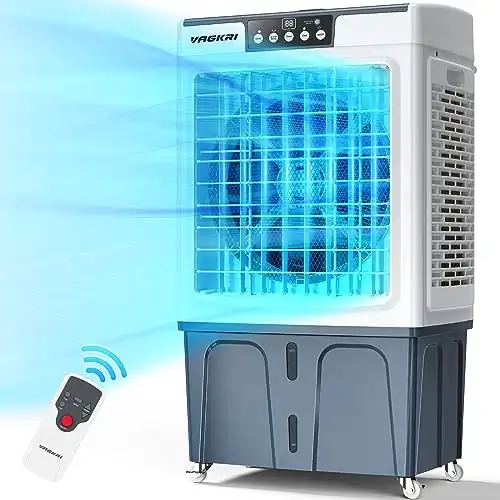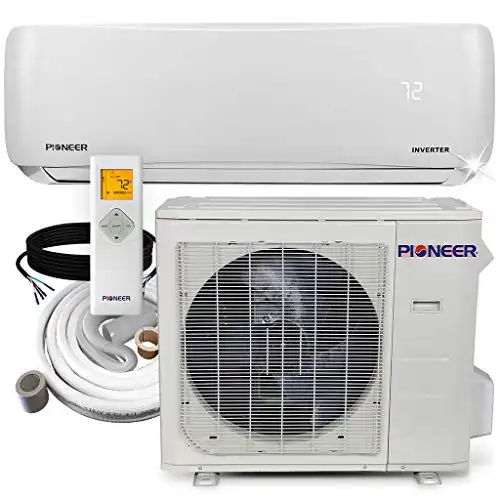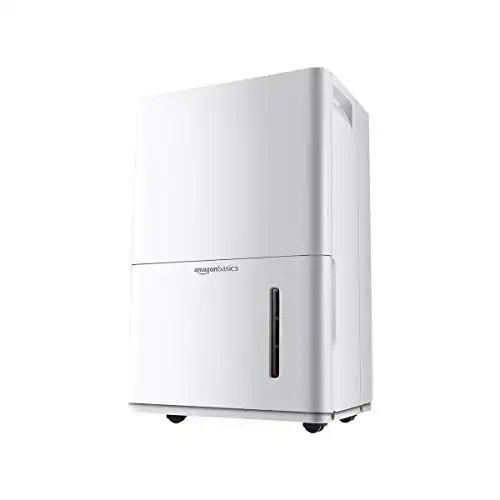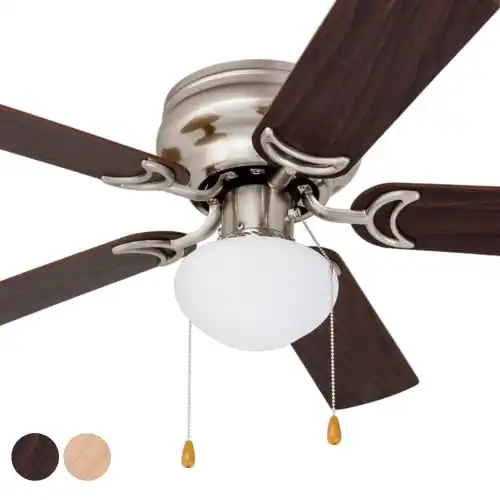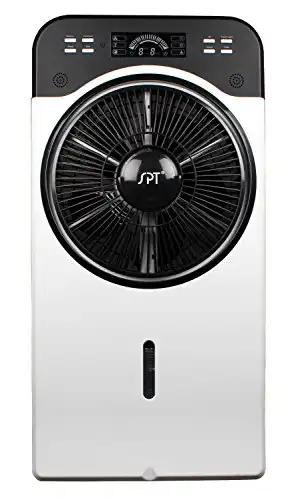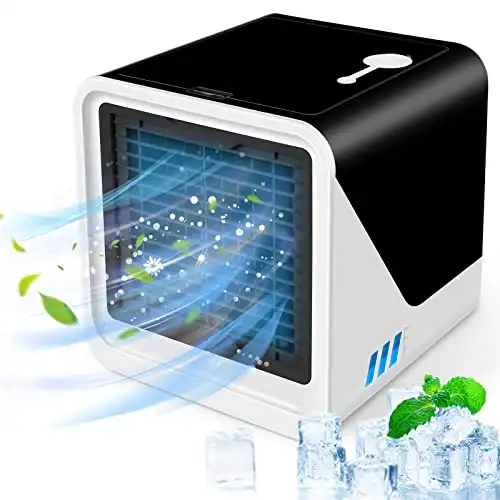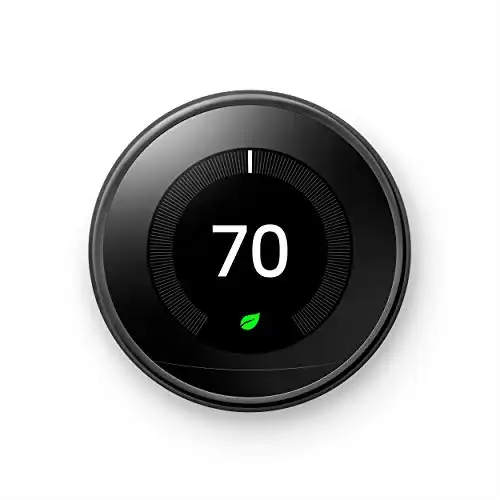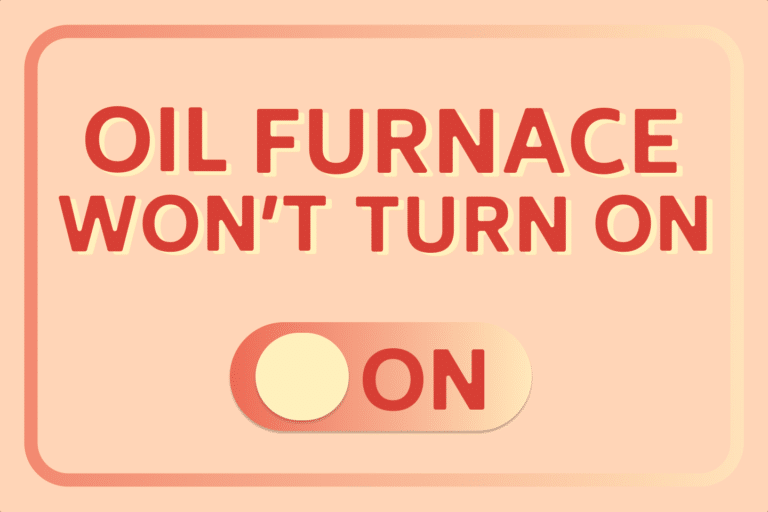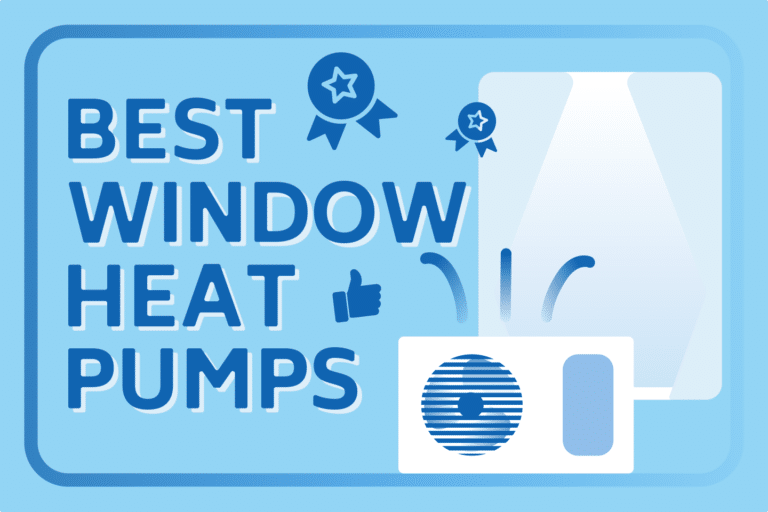If you are looking to save money on energy bills, then you need to look for alternatives to air conditioners.
Why?
Well, first, your air conditioner is bad for the environment.
100 million tons of carbon dioxide are released every year by air conditioners, which is approximately 2 tons per household.
3/4 of all homes in the US have air conditioners, and air conditioning uses 6% of the electricity in the United States for $29 billion to homeowners.
At a household level, air conditioners can be a money sinkhole.
In this article, we look at alternatives to air conditioners along with other methods and ideas for saving costs on cooling your home.
Let’s dive right in.
Alternatives to Air Conditioners
1. Ice Cooling System
An ice-cooler works in conjunction with an existing air conditioning unit.
It is able to be installed in new builds or retrofit so there are no issues installing somewhere with an existing air con unit.
So why is this useful?
In a way, it’s much like a hybrid car, utilizing Ice to cool spaces during peak power usage which saves you money and helps lessen your environmental footprint at the same time.
According to the manufacturer, Ice-Energy, the ice cooling system or “Ice Bear” reduces peak cooling electricity by 95% for up to 6 hours a day, every day.
2. Evaporative Coolers
Evaporative coolers can be a great and in some cases more portable AC alternative but there is a small catch.
They only work well in low-humidity areas.
Evaporative coolers work, in short by putting moisture into the air which then evaporates, taking the heat with it and leaving a cooler space. (See the video below for a more detailed explanation).
These coolers can range in size from portable or can be configured as a whole-house cooling system.
Some units can cool the air as much as 15 – 40 degrees F and are far more environmentally friendly than air conditioning units.
Installation costs can sometimes be half as much as aircon and can use around 1/4 of the energy.
3. Ductless Mini Split System
Although a ductless mini-split is still an air conditioner, one can still include it as an alternative to traditional ducted air conditioners for 2 reasons.
It saves money and energy.
According to energy.gov duct losses can account for more than 30% of energy consumption for space conditioning.
Mini-splits can also save energy and money because they are more localized than ducted AC in that they are mostly used to heat up individual rooms.
Mini-splits are also less expensive to run and easy to install.
With quality insulation and a thermostat for temperature regulation, a mini-split can save you money over a traditional ducted air conditioning unit.
See how ductless mini-splits work.
4. Hydronic or Radiant Heating & Cooling
Most people know about hydronic or radiant heating but may not be aware that hydronic cooling is available within the same system and works in much the same way.
Coldwater runs through pipes which can be placed in the ceiling, floor or walls and the cooled surfaces absorb heat energy evenly to create the cooling effect using little energy.
Hydronic heating provides a cleaner and much quieter air conditioner alternative and also doubles up as a heater in winter.
Hydronic cooling also saves you money by controlling the temperatures of individual rooms, throw in a thermostat and you have an efficient way of heating and cooling your home while saving money on energy.
In some situations, it is said that radiant cooling can save up to 30% of energy compared to conventional systems.
Radiant cooling is better suited to dry climates and condensation can become an issue in more humid climates.
Find out more about radiant cooling here & here.
5. Geothermal Heating & Cooling Systems
Geothermal cooling makes use of the earth’s consistent ground temperature by exchanging heat with the earth using an underground network of pipes filled with water or refrigerant.
In Sweden & Switzerland, 75% of homes utilize geothermal heating and cooling.
Because geothermal does not use fossil fuels this method of cooling is much more environmentally not to mention a sustainable source of energy.
Geothermal systems have a long shelf life of 50-70 years and are said to be between 50 & 70% more efficient than other heating systems.
As you can imagine though the upfront costs are a little more with a geothermal system and you don’t want to burst a pipe if you want to avoid costly repairs.
If you are in New York, check out Dandelion, a Google startup that brings geothermal energy to residential homes at a lower cost than traditional geothermal systems.
Here is a video explaining the process of geothermal heating and cooling.
6. Insulation
Though most people realize insulation helps to keep your home warm in winter, insulation also helps keep your home cool in summer.
Insulation works much like a flask works, by providing an insulating layer between the liquid inside and the outside air, keeping the warmness or coolness from escaping.
If you don’t have a well-insulated home not only could it be costing you in heating and cooling bills with a well-insulated home saves up to 80% in heating and cooling losses.
Good insulation is one of the most efficient ways of saving energy in your home.
In a typical house, the walls can lose up to 30 – 40% of heat alone.
Not sure if your home is well insulated or not? Look out for these indicators.
Learn more about insulation here.
7. Solar Cooling
It kind of makes sense right?
It is the warmest when the sun is out and that’s when it’s best to harness solar energy.
Solar cooling can work in a couple of ways.
One is by using heat to generate cooling most of the time via an absorption chiller.
This is effectively the same cooling method as a refrigerator except without using electricity and a compressor.
The other is via employing the same cooling process as the “Ice Bear” (#1 on our list), by using ice as a cooling method.
Solar cooling is a clean albeit not so common method of cooling currently.
8. Biomass Cooling
Though not all that readily available, biomass cooling is another alternative to air conditioning.
Like solar cooling, biomass cooling utilizes absorption coolers but instead of being powered by solar, the unit is powered by biomass.
The benefits of using biomass from other fuel sources such as fossil fuels are its reliable fuel source as well as being a renewable fuel source.
It also carries a low carbon footprint.
9. Fuel Cells
Not one of the more mainstream methods but something that is likely to become more prominent in the future is using fuel cells for energy storage.
Some fuel cells run on fossil fuels such as natural gas but rather than using combustion, use chemical reactions to create energy.
By using fuel cells you will help reduce your carbon footprint and also reduce your energy consumption, compared to your regular air conditioning unit.
In Japan, hydrogen fuel cells are becoming a bit more popular with over 200,000 units sold by Panasonic since 2009.
10. Window Film
Window film is a thin laminate film that can be installed on the interior or exterior windows of a house.
Given windows are said to occupy 15-20 percent of the surface area of walls, that is a lot of heat that can enter a room.
So how can window film help keep your home cool and become an AC alternative for an apartment?
Window film can provide up to 82% solar energy rejection versus untreated glass keeping your home cooler and saving you considerably on any additional cooling costs.
As well as providing a nice cooling option, window film has a number of other benefits including reducing glare, reducing UV rays, they can provide a protective layer against window damage (chips, etc.), and reducing fading on furniture.
Find out more about window film here.
11. Double Glazing
Double glazing is popular in Oceania and the UK as it is able to keep the house cooler in summer and warmer in winter.
Having double-glazed windows can cause a reduction in solar heat gain by up to 13%.
Triple glazing is also available for even more effectiveness.
According to the Department of Energy, replacing old windows with new, energy-efficient windows can pay for themselves with savings in energy costs.
In conjunction with Low-E glass, double glazing can prevent up to and over 50% of solar heat gain through your windows.
Not only that double and triple glazing provide heat retention in the window for all year round energy saving costs.
Not all glass is the same so be sure to do your research if you are considering double glazing.
Find out more about double glazing.
12. Low-E Windows
According to the California Energy Commission, it is estimated that 40% of typical buildings’ cooling requirements are due to solar heat gain through windows.
40%! That’s a lot.
Low-E or ‘low emission’ windows are much like window film except they are much more effective at reducing solar gain (and also keeping the heat inside your room)
Low-E window film is often used in conjunction with double-glazed/paned windows for even more effectiveness than single-paned Low-E windows.
Find out more about Low-E glass and windows here.
13. Thermal Curtains
Probably by now, we have got the message that windows are usually the biggest source of heat loss and solar gain in your home.
Another method that can contribute as an alternative to an air conditioner is using thermal curtains.
According to networx.com thermal curtains are able to reduce the amount of heat that is transferred through your windows by up to 24%.
Not only are they able to offer extra energy savings they also have the added benefit of reducing noise and blocking out all light, which is great for bedrooms.
14. Exterior Solar Screens
The most efficient way to prevent heat from entering your room or house via the windows is by preventing the sun from passing through the windows at all.
For these screens placed on the exterior of the house such as solar screens can be a great solution.
According to one study, having exterior solar shades can cut your air conditioning costs by up to 25%.
Most solar screens are also able to be customized to fit nicely within your decor and are easily retractable during winter when you are looking to get as much sun as possible.
15. Window Shades (Interior)
According to the DOE, window shades, when installed correctly, can be one of the simplest and most effective window treatments for saving energy.
For even greater efficiency dual shades can be used with highly reflective colors/materials on the outside and black or dark heat-absorbing colors on the inside.
When installed correctly using side tracks window shades can reduce heat exchange by up to 45%.
Window shades are able to fit nicely into your home decor and there are also motorized options available for your convenience.
16. Plants
If you are looking for an entirely green solution you will love this air conditioner substitute.
Plants.
Some plants have the ability to keep the air temperature cool as they lose water during transpiration, which cools the air around them.
According to a study, plants could have the ability to cool an office space by up to 10 degrees.
Along with cooling the air the moisture released by these plants helps “maintain indoor humidity in the human comfort zone of 30 to 60 percent, and helps prevent materials such as wood from cracking when dried out.” (source)
Many of these plants also have air-purifying qualities.
Find out which plants can help keep your home cool.
17. Awnings
The best way of keeping a house cool is to keep the heat out in the first place.
Awnings are a great solution to this as they regulate the amount of solar energy that reaches the facade of your home, especially the parts of it that are glass.
Awnings, according to the Department of Energy can prevent up to 77 percent of solar heat gain which can also result in up to 55% energy savings during summer.
Also, by reducing UV rays from entering your home this can extend the life of your furniture.
Awnings can be motorized and are virtually maintenance-free.
18. Dehumidifier
This method is only going to work if you live in an area with high humidity however if you do this could bring you some energy savings.
Though dehumidifiers do not cool your space they do reduce the humidity which brings a lot more comfortable.
Humidity makes us feel hot because it prevents us from cooling ourselves.
When it’s humid and hot, your sweat does not evaporate so you do not get the cooling effect you would usually get.
By reducing the humidity, though you might technically be cooler, you will feel cooler and far more comfortable.
Dehumidifiers also have a number of other benefits such as reducing mold and mildew and reducing the damage humidity has on your furniture.
19. Cool Roofs
Though there seem to be conflicting opinions on cool roofs in terms of their greenness with one side saying it could potentially increase global warming while others say it reduces global warming, cool roofs are another consideration for cooling your home.
The principle behind cool roofs is that your roof is painted with a highly reflective, paint, sheet, or tiles.
Not only can cool roofs give you savings with reduced energy cost (with a/c) but you can save in a number of other ways including rebates, equipment downsizing, and extended roof lifetime.
There are a number of things to consider before running with a cool roof, so be sure to do your research.
There are also a number of other methods to cool your roof too, check out this guide to cooling your roof.
20. Wall Vines
Using a trellis or the right variety of vine to climb the walls of your house can help prevent solar heat through walls.
Because the materials your house is made of, like bricks, absorb and retain heat, this causes the inside of your home to heat up.
In the summer, vines can absorb and dissipate heat from the sun quickly and prevent your walls from heating thus bringing you energy savings on cooling.
The right kind of vines can also protect your walls from the elements.
Vines also grow very quickly making it a fast addition to your energy saving costs.
21. Green Roofs
Much like vines keep walls cool, green roofs also help keep your home cool and reduce cooling costs.
During summer, the surface temperature of a green roof can be cooler than the air temperature, whereas the surface of a conventional rooftop can be up to 90°F (50°C) warmer.
The obvious benefits of a green roof are lower energy usage costs, contribution to air purification, and an increase in biodiversity.
There are a number of benefits other benefits that come with having a green roof including enhanced stormwater management and enhanced water quality.
22. Trees
If you are in it for the long haul, trees are a fantastic way of providing extra cooling for your home during summer.
According to the DOE, shading is one of the most cost-effective ways to reduce solar heat gain and cut energy costs.
With the right kind of tree and placement, trees can provide great shade during summer months and come winter shed their leaves for more sun access in winter.
Apparently, during summer, well-shaded neighborhoods can be up to 6 degrees cooler than treeless areas.
23. Ceiling Fans
Ceiling fans are a great way of reducing your energy bills.
Though ceiling fans do not cool directly, used in conjunction with your AC or other cooling methods you can drastically reduce your energy consumption.
Using a ceiling fan uses on high uses approximately 75 watts while using an AC can use around 2000 watts so you can see how that might mount up over time.
In summer ceiling fans work by creating airflow around your room and also by blowing air directly onto you providing a cooling effect.
Ceiling fans also come in many different styles to match your decor.
24. Floor Fans
Like ceiling fans, floor fans don’t actually lower the temperature of the air but provide cooling to a person, directly by providing a wind chill effect.
There are many different types of fans that you can use for cooling with a range of varying features among them that could be used as AC alternatives
Tower fans and pedestal fans are among the most common and our guide can help you choose which might be most useful in your situation.
Floor fans are also generally quite cheap and use much less power than an air conditioner.
25. Indoor Misting Fans
If you don’t mind a bit of moisture then you could consider an indoor misting fan.
Misting fans work by blowing a fine mist of water into the air, and if it is hot, it will evaporate taking the heat of the air with it, thus cooling the surrounding environment.
This works much better in a dry (not humid) environment as humid environments have a lot of moisture in the air which means the mist is less likely to evaporate.
Misting fans are environmentally friendly.
Find out more about misting fans here.
26. Radiant Heat Barriers
Radiant heat barriers are another way you can reduce your air conditioner use.
Radiant heat barriers are generally installed in the attic and work, in short by reflecting radiant heat back out from the roof. Check out the video below for a more in-depth explanation of how they work.
According to the Department of Energy, when installed correctly in the right environments, radiant heat barriers can reduce cooling costs by up to 5-10%.
You can learn more about radiant heat barriers here.
27. Portable Air Conditioner
An effective alternative to an air conditioner is an air conditioner.
Hear me out 🙂
Portable air conditioners although not more environmentally friendly in terms of operation, can make your home more energy-efficient.
Because they are more portable, they can be used from room to room, rather than cooling your whole house from a central location like a wall or window-mounted AC unit.
Because you are able to cool on a room-by-room basis, you will also have the option to choose a smaller unit, which will help with energy savings as well.
Find out more about portable air conditioners in this in-depth guide.
28. DIY Air Conditioners
If you enjoy a bit of handy work you could go down the route of creating your own air conditioner.
This usually involves some form of container, a fan, ice, and some DIY skills.
It’s a low-cost, environmentally friendly alternative to an air conditioner and is portable, renewable, and uses very little energy.
They can also be placed in close proximity to you which will cool you directly.
There are a huge number of variations and instructions online, below are a few of our favorites.
29. Whole House Fan
Some suppliers of whole-house fans say that you can save up to 90% on AC-related cooling costs and according to the Department of Energy, whole-house fans can sometimes completely substitute an air-conditioning unit.
Although a bit tricky to have installed, whole-house fans can have a good return on investment, with the potential to pay itself off from energy savings in 1-3 years.
They are also said to be 10 times more energy-efficient than air conditioners.
Supplemented with an aircon or other cooling methods you can certainly make significant energy savings with a whole house fan.
30. Replace Your Old Air Conditioning Unit
Depending on the age of your air conditioning unit you may be able to save money on energy costs by replacing your air conditioner.
Today’s best air conditioning units use 30% – 50% less energy than those made in the 70’s and 20% – 40% less energy than those made 10 years ago.
Some states offer tax credits on heating and cooling systems if they are related to energy efficiency.
Be sure to look for Energy Star air conditioners.
31. Change the Filter on your Air Conditioner
Believe it or not, changing the air filter on your air conditioner regularly can save you money on energy costs.
If your filter begins to clog, it will restrict airflow, therefore, increasing cooling costs.
It is suggested that you should change your filter every 3 months at least, and while that will cost money in itself, you will likely still save money.
There is a nice savings chart you can check here.
According to the Department of Energy, a clean filter can lower your cooling costs by 5% – 15%.
32. Raise the Temperature of Your Thermostat
Finding the balance between comfort and saving energy usage can be tricky.
I know in my office, just finding an agreeable temperature for each person is nigh impossible.
It might help to know for each extra degree in the temperature you can deal with you can save on your energy bills.
Each degree you can raise your thermostat can save you up to 3% – 5% on air conditioning costs.

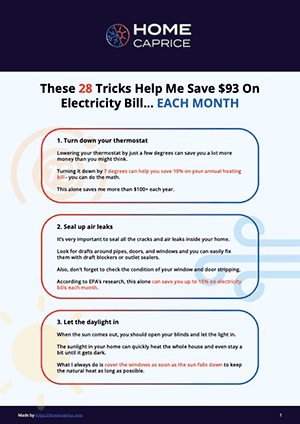
Download this FREE cheat sheet to find 28 tricks that can help you save on your electricity and heating bill each month.
Click here to get a FREE Cheat-Sheat
